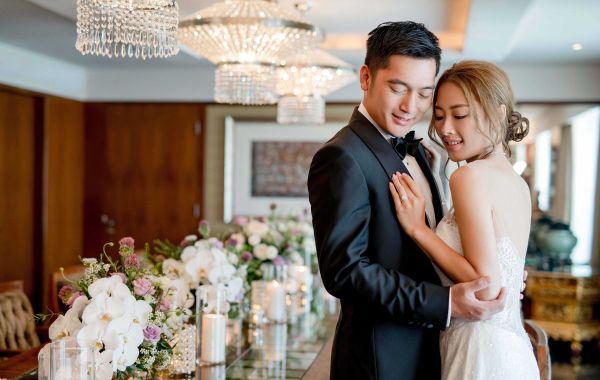Exploring the Rich Tapestry of 10 Beautiful Chinese Wedding Traditions
Introduction:
China's wedding industry, with around 10 million couples tying the knot annually, is a thriving $80 billion enterprise. Despite its staggering economic scale, Chinese weddings remain deeply rooted in tradition. While the wedding ceremony itself is often intimate and serene, the wedding banquet, akin to a reception, compensates with hours of sumptuous food, multiple bridal outfit changes, and an atmosphere of pure celebration.
The color red holds immense significance in Chinese weddings, symbolizing success, love, loyalty, fertility, and honor. Gold, representing wealth, is another common color choice. Traditionally, white was shunned due to its association with funerals, but as Western influences seep in, Chinese brides have begun embracing white wedding gowns. Let's delve into the captivating world of 10 beautiful Chinese wedding traditions that will inspire and enchant you.
1. Collecting the Bride:
Before the wedding ceremony, the groom leads a vibrant procession to the bride's home, commencing the journey with a lively display of firecrackers, drums, and gongs. A child walks at the forefront, symbolizing the wish for future offspring. Lanterns, banners, musical instruments, and a dancing lion follow, creating a colorful spectacle.
2. Let the Games Begin:
Upon arriving at the bride's residence, the groom engages in spirited haggling with the bride's friends, who serve as bridesmaids in Western weddings. They set tasks and challenges for him to complete, expecting red packets of money in exchange for the bride's release. Once negotiations conclude, the couple bows to the bride's parents before returning to the groom's home.
3. Arriving Home:
Firecrackers are ignited to announce the couple's arrival at their new home. A red mat is placed for the bride, ensuring her feet do not touch the ground as she enters the house. Depending on family traditions, she may step over a saddle or a lit stove to cross the threshold, symbolizing the expulsion of evil influences.
4. The Ceremony:
In traditional Chinese weddings, the ceremony itself is a relatively small component. Vows are exchanged at a local government office during the paperwork signing. Then, the couple participates in an intimate ceremony where they pay homage to nature, family ancestors, and deities. The ceremony culminates with the couple bowing to each other.
5. Tea Ceremony:
Often held after the ceremony or the next day, the tea ceremony involves the newlyweds serving tea with two lotus seeds or two red dates to the groom's family members after having lunch with Catering Jakarta. Starting with the groom's parents and proceeding from eldest to youngest, family members sip tea and offer the couple red envelopes containing money or jewelry.
6. The Banquet:
It's customary for the parents of the bride and groom to host separate wedding feasts, sometimes spanning multiple days. In recent times, joint affairs have become popular, characterized by vibrant, colorful, and extravagant celebrations featuring five to ten courses with symbolic foods. Whole fish, symbolizing abundance, and fish roe as a sign of fertility are common examples.
7. Paying It Forward:
Banquet guests sign their names upon arrival and present red envelopes to the attendants. The money is counted and recorded, allowing the newlyweds to acknowledge each guest's contribution. This practice serves a dual purpose, as Chinese tradition dictates that when the newlyweds attend guests' weddings, they must give a larger sum of money than they received.
8. Costume Changes:
Chinese brides are fortunate to have multiple outfit changes during their wedding ceremony and banquet. While a traditional qipao dress is often worn, brides can also opt for a Western-style white wedding dress and additional gowns. Outfit changes may occur between the ceremony and banquet and throughout the dinner festivities.
9. After the Wedding:
The day following the banquet, the bride is formally introduced to the groom's relatives and friends. She kneels before her new husband's older relatives, receiving a gift from each, and is given a title reflecting her husband's family status. Two days later, she visits her parents' home as an esteemed guest, symbolizing her complete acceptance into her husband's family.
10. Photographs:
Modern Chinese couples prepare their wedding album before the actual wedding, featuring photos taken at various city locations or popular landmarks while wearing multiple outfits. This album is prominently displayed at the banquet for guests to enjoy.
Conclusion:
The intricate tapestry of Chinese wedding traditions reflects a rich cultural heritage that intertwines past and present. From vibrant processions and ceremonial rituals to sumptuous banquets and multiple bridal attire changes, these traditions paint a vivid picture of love, respect, and celebration. While some customs have evolved to embrace modern influences, the essence of Chinese weddings remains deeply rooted in age-old traditions and values.






